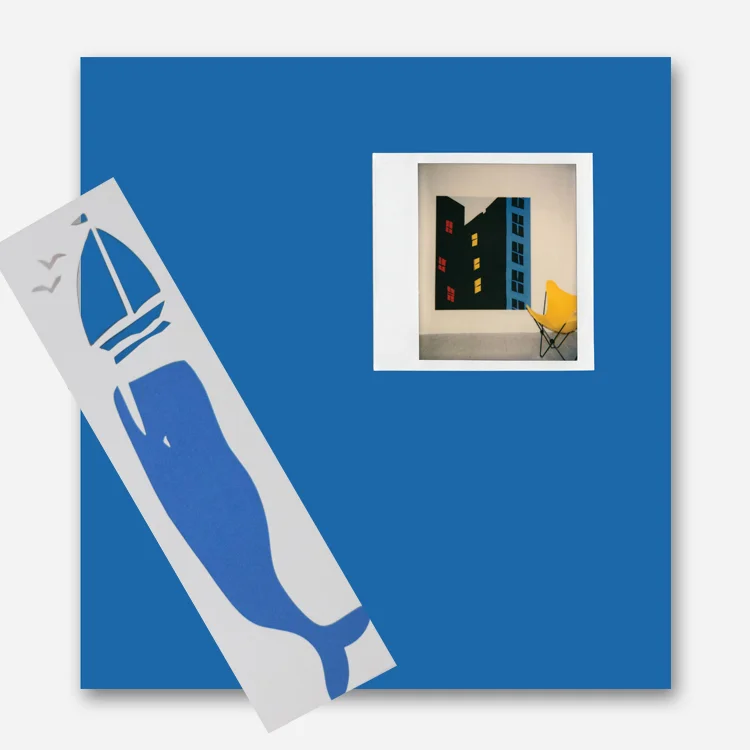TOM SLAUGHTER
TOM SLAUGHTER
FOREWORD BY: GLEN LOWRY
ESSAYS BY: DAVID MARSHALL GRANT, ANDY FABO, JON ROBIN BAITZ, ANNE PASTERNAK, MARTHE JOCELYN, JIM KEMPNER, AND GEORGE NEGROPONTE
INTERVIEW WITH: STEPHEN HANNOCK, JEAN-PAUL RUSSEL, ROBERT HARMS, RAY CHARLES WHITE, AND SCOTT KILGOUR
Hardcover
10 ½ x 11 ½ inches, 272 pages
297 color plates + 10 black and white
ISBN: 978-1-7329864-1-1
$85 | £65 | €78
The fall title with a commemorative bookmark accompanies the exhibition at the Parrish Art Museum, opening November 9, 2019. The interior content is identical to the Red edition, which was released earlier this year.
Of Tom Slaughter, Henry Geldzahler, the first curator of twentieth-century art at The Metropolitan Museum of Art, commented: “The quality of freshness, the familiar world re-seen, from the water towers of New York City to the rural pleasures of boating, is the most immediately arresting aspect of Tom Slaughter’s art...Bold bright colors swiftly laid down echo with resonances: Léger and Stuart Davis, Raoul Dufy and Roy Lichtenstein.” Slaughter’s work, with its seemingly effortless whimsy rendered with a strong sense of line, color, and rhythm, has also been compared to Matisse. His Pop-inflected drawings, prints, paintings, and illustrations convey his love of life as he relentlessly explored the complexities of the urban scene or the simple pleasures of boating. The Artist Book Foundation is pleased to announce the publication of Tom Slaughter, an extensive monograph of the artist’s enormous body of work that celebrates his enduring optimism, personal and artistic honesty, and charming brashness in a landscape of pure joy.
Glenn Lowry, director of the Museum of Modern Art, reveals Slaughter as a treasured friend whose artistry was fueled by endless curiosity about life’s simple pleasures, a man who made his innumerable friends and acquaintances part of his personal community. Slaughter’s lifelong friend, actor and writer David Marshall Grant, remembers the artist’s delight when, in a high school art class, he was introduced to the mysteries of negative space and the enigmatic power it brings to an artwork. Artist, art critic, and independent curator Andy Fabo describes his friend’s vibrant art as all about pleasure. Even in the most turbulent of times, he took a celebratory approach to his art, offering his viewers a sensual and visual delight. For Jon Robin Baitz, playwright and screenwriter, the “sweetness” of Slaughter’s images was insistent, a compulsive scrutinizing of the visual world of small domesticities. Marthe Jocelyn, the artist’s former wife and a children’s book author and illustrator, reflects on the couple’s acclaimed collaboration on a series of books for the very youngest readers. Jim Kempner, gallery owner, recalls Slaughter as a man of charm and enormous artistic talent who always managed to retain a childlike innocence. Artist George Negroponte remembers Slaughter as focusing on the life around him, especially his daughters, in a unique mixture of everyday images, abstracted yet conveying popular culture. And in an interview both informative and poignant, Slaughters’ friends, artists Stephen Hannock, Jean-Paul Russell, Robert Harms, Ray Charles White, and Scott Kilgour pay tribute to a dear friend whose prolific career, though cut short, was remarkable for a visual language that makes his art accessible to everyone.








